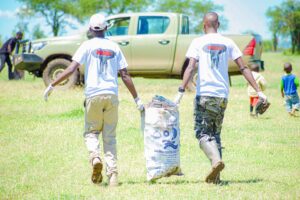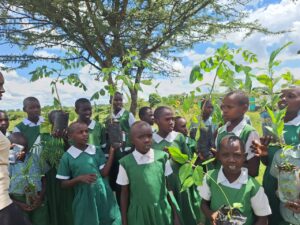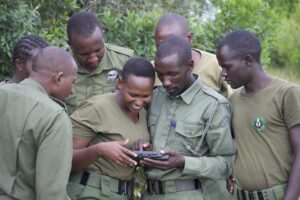The biggest story in July is that Mara Elephant Project along with our partners at Kenya Wildlife Service (KWS) and the Sheldrick Wildlife Trust (SWT) vet units successfully collared five new elephants in the Mara ecosystem. Collaring, monitoring and collecting data on elephants are key components to ensuring we meet our mission objectives. MEP has been using the real-time location data provided by the collars to monitor the movements of 400-600 elephants (estimated by spot counts during patrol flights) across the Mara, Mau, Loita and Rift Valley ecosystems. Our patrol teams rely on this data for daily patrol planning. As a result, security in the areas MEP operates has increased since 2011 and the levels of poaching have dropped. The collaring, monitoring and data collection on elephants is a key approach for our organization and the collars deployed this month are going to give us unique insight on elephant movements over a very large area from Southern Baringo, Mau, Nairobi, Mosiro and Loita.
MEP Monthly Report July 2019
While MEP maintains a collaring schedule that outlines for our organization a timeline for collaring in any given year, elephants in July went into places where they have not visited for many years. So, to react to this, our collaring team needed to rapidly and effectively make decisions on the best collaring candidates and successfully did this as would be expected with its combined experience. Not only were the airborne mobile team members critical to getting to these extraordinary sites across Kenya, but the ground teams and technical support staff, made each operation a success. In July, MEP flew the Karen Blixen Camp Trust helicopter in more operations than ever before. The Karen Blixen Camp Trust helicopter was crucial to ensuring both personnel and the elephants were safe in very difficult conditions.
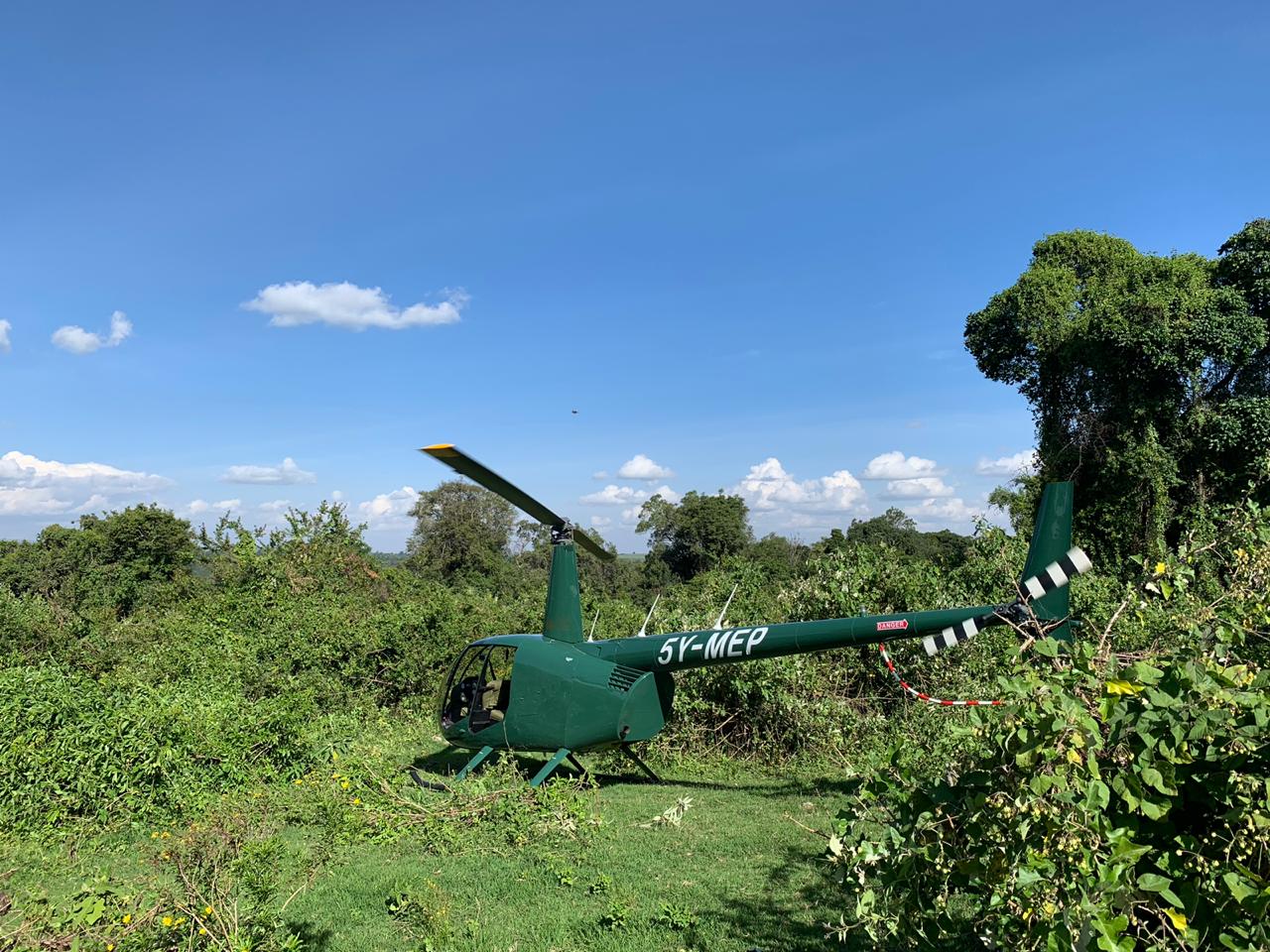
The KBCT helicopter landing spot in the Mau Forest during a collaring operation in July.
First, we start in the Mau Forest area where MEP collared two new elephants: Maximus and Vasco. Both bull elephants, Maximus was collared by the team on July 11 in the Naisoya area of the Southeastern Mau Forest Complex. This area is important as it is the farthest eastern extent of the forest, and there is a hard boundary with farms which makes it a conflict hotspot. When our team got there, they identified a mixed herd of around 30 individuals made up of bulls, females and calves who were resident to the area. This herd presented the perfect elephant candidate for collaring, a male bull that was identified by the Mara scientists and KWS vet. It was a very challenging collaring in the thick forest and elephants moving in all directions because of the herd’s large size. The only place to land nearby was only large enough for the tail rotor not to hit bushes. The deployment of the collar itself was uneventful and we woke-up the newly named elephant ‘Maximus’ after 15 minutes asleep. Maximus’ protection over the next three years was funded by WildAid. The second bull, Vasco, was collared on July 20 in the most northern end of the Mau Forest called the Chemesusu Forest. Vasco is named for Vasco Ndumpa, the Kenya Wildlife Service ecologist that works directly with MEP on many of our collaring operations. After his collaring, he streaked to the east across the Rift Valley near Mukuyuni and Lake Solai. He is currently in a small forest patch near sisal plantations and we’re eager to see where he goes next as this is the first collared elephant to use this area. Vasco’s protection for two years along with the collaring operation was funded by the Indianapolis Zoological Society.
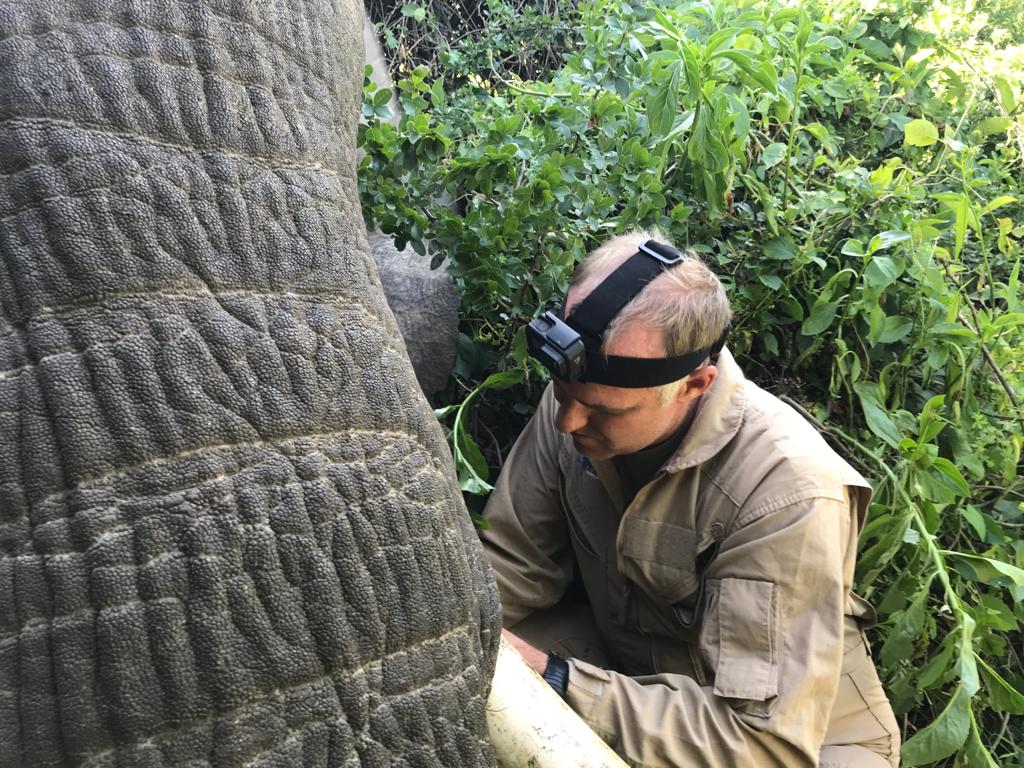
MEP CEO Marc Goss collaring Maximus on July 11 in the Mau Forest. This elephant’s protection was funded by WildAid.
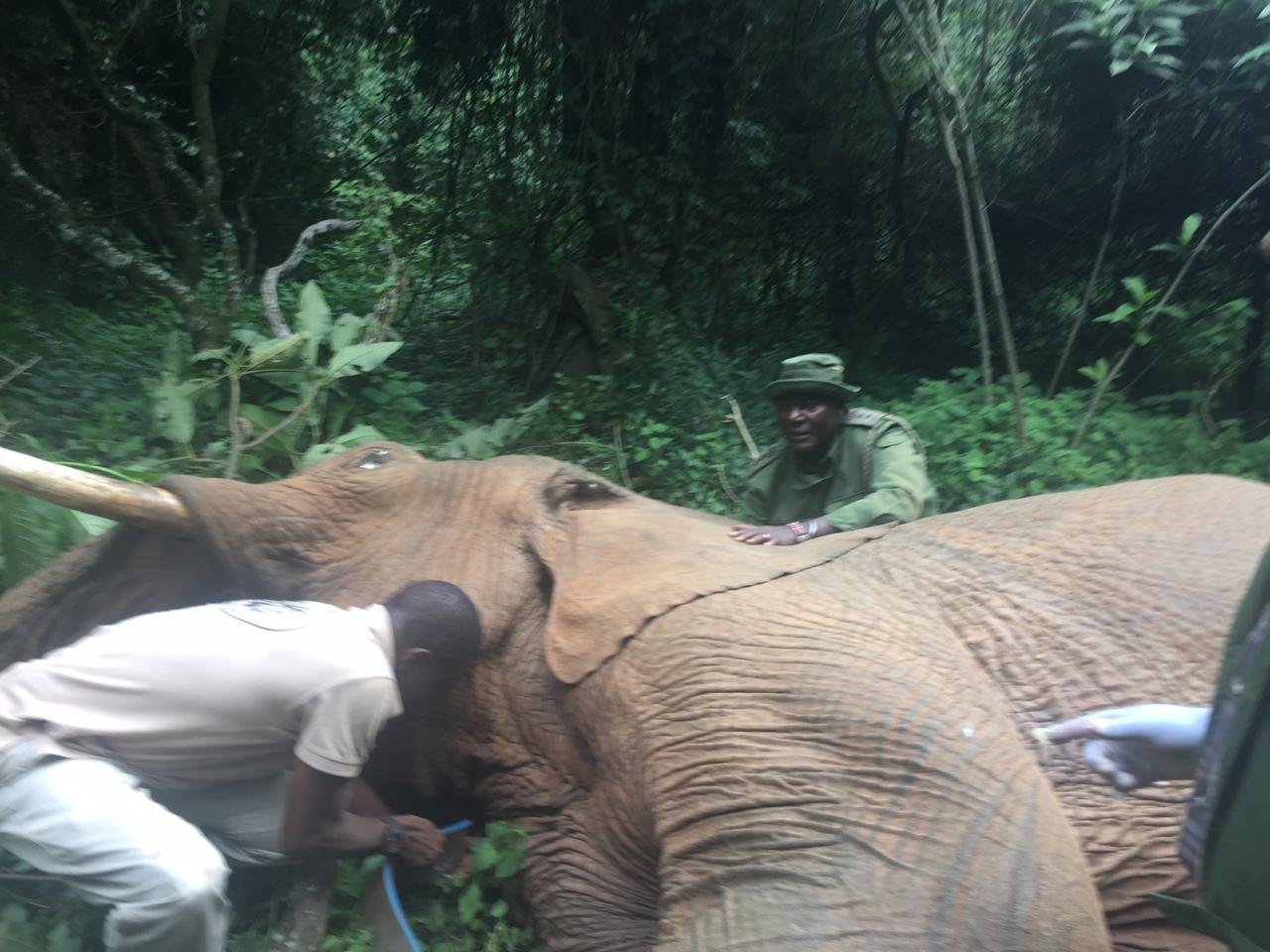
Vasco being collared in the Mau Forest on July 20. His protection for two years was sponsored by the Indianapolis Zoo.
The third elephant collared in July resides in the Suswa area of the Mara ecosystem. The Suswa and Mosiro areas are both very dry and MEP is often called in to work with the KWS Mosiro outpost to react to human-elephant conflict in this area. This collaring was in direct response to human-elephant conflict in July which resulted in one death and one injury in the local community. So, on July 26, MEP along with the KWS vet from the Nairobi Vet Unit successfully collared a bull elephant in Suswa named Napoleon. MEP has been at forefront of human-elephant conflict mitigation, recording and characterizing conflict mitigation on EarthRanger. Our conflict mitigation work put us in front of the National Human Wildlife Conflict Compensation Task Force and two meetings took place in July discussing mitigation strategies. During these meetings, one of the items which was discussed as a tool in managing human-elephant conflict was collaring conflict individuals and sharing movement data in real time with key partners. Collaring Napoleon was the perfect example of this.
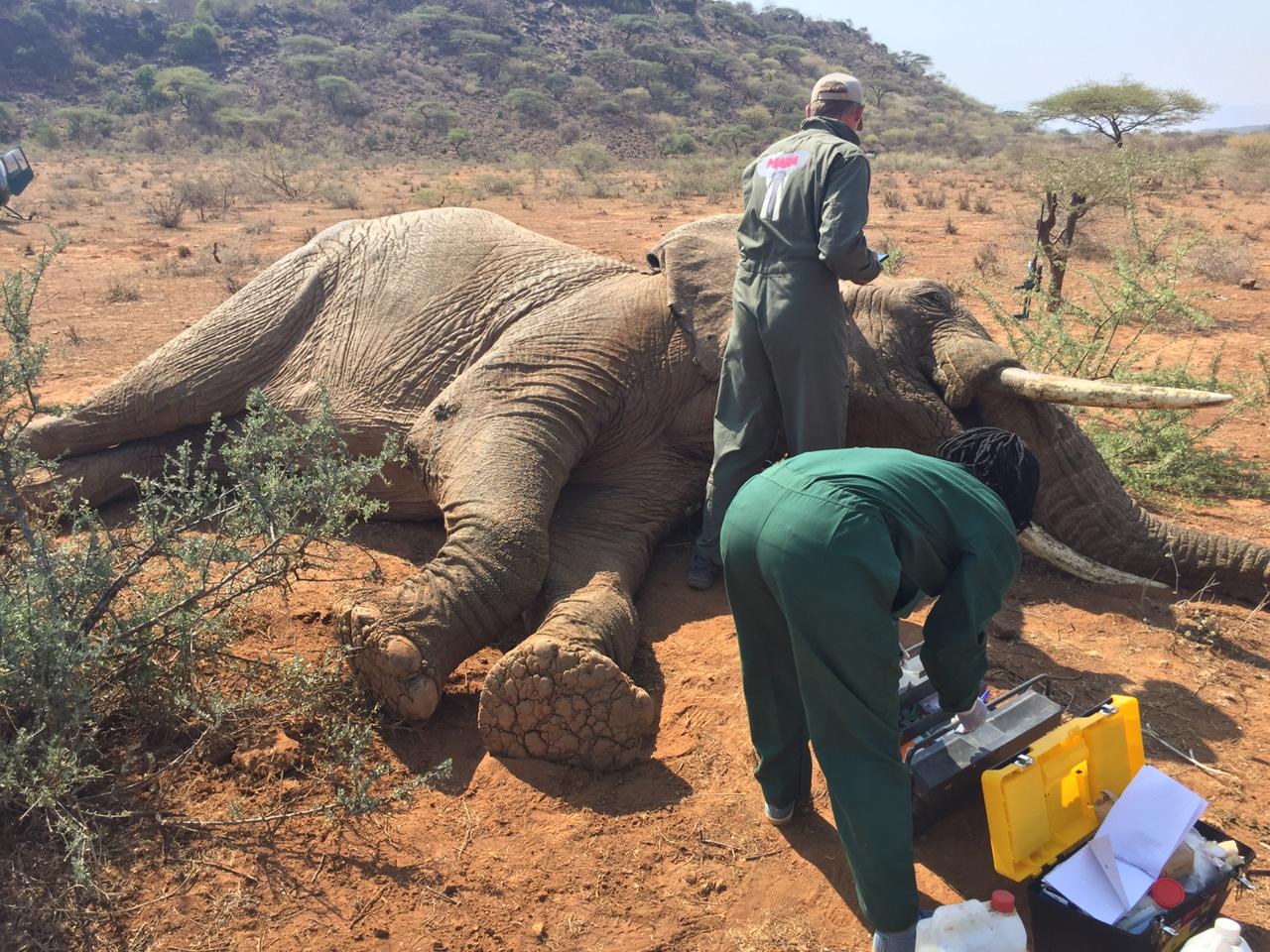
The elephant named Napoleon collared on July 26 in Suswa.
The fourth elephant collared in July, is a sub-adult female elephant in the Loita Forest named ‘Wangare’. The Loita Forest separates the Mara ecosystem from the Southern Rift ecosystem and the montane forest and is home to an estimated 400 elephants. Although some of the forest is protected, it is still under threat from illegal logging, encroachment, and poaching. By collaring elephants inside the forest, we will better understand their movements over time, react to alerts and monitor them on the ground and by air increasing their security.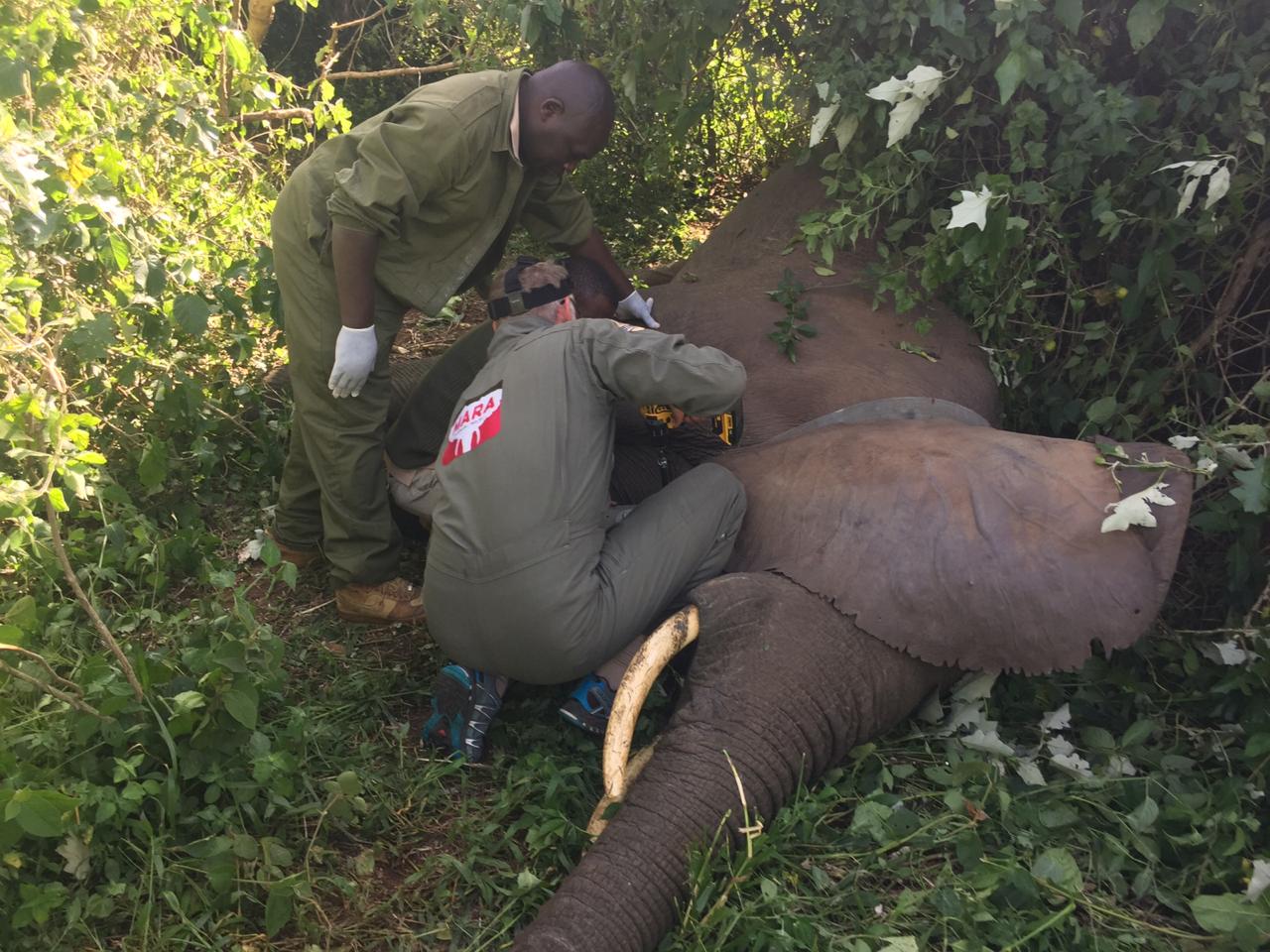
Wangare collared in the Loita Forest pictured with KWS Vet Dr. Limo and Marc Goss.
Finally, MEP collared a bull elephant on July 30 located in the Thogoto Forest, on the western side of Nairobi with a population of over 3 million people. We received notice on July 28 that two bull elephants were spotted by mountain bikers in the heavily populated area of Dagoretti and KWS immediately responded by sending rangers to monitor this elephants’ movements on the ground and keep both the elephant and nearby community safe. It was determined the best course of action was to collar one of the elephants in order to track his movements and collect data on where he came from, how he got there and why he may have ventured that close to Nairobi. The collaring mission successfully took place on July 30 with the help of MEP and KWS rangers, the Karen Blixen Camp Trust helicopter operated by MEP CEO Marc Goss and the KWS Vet Dr. Limo with the Sheldrick Wildlife Trust Mobile Vet Unit. The new bull is named “Hannibal” and will be closely monitored by MEP and KWS rangers on the ground and in real-time using the Save The Elephants Tracking App. What will be interesting in the long term is to collect movement data on this elephant candidate.
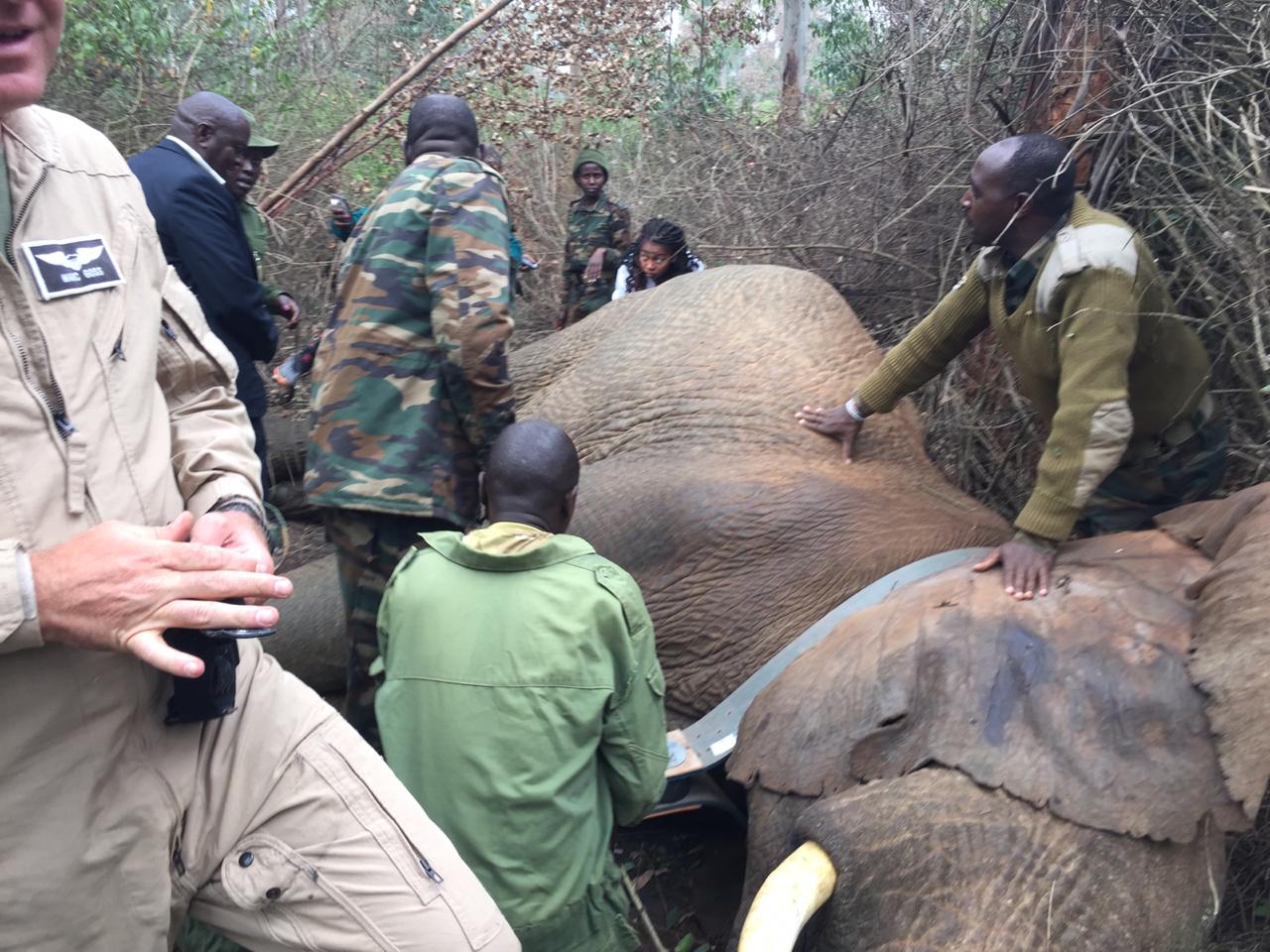
Hannibal collared on July 30 near Nairobi.
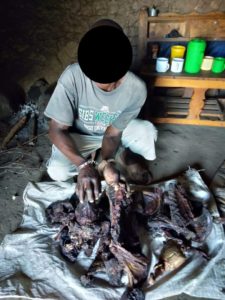 The MEP intelligence team continues to have success with arrests of suspects and ivory recovered. During the month of July, the MEP intelligence unit and KWS arrested two suspects in possession of 17 kg of ivory. In the Mau Forest, the Sheldrick Wildlife Trust Mau De-Snaring Unit were able to improve forest security by taking government officials to the areas where logging, farming and charcoal production continue in the forest. This spurred a larger operation to evict these illegal users/exploiters of the forest. In July, SWT Mau De-Snaring Units recovered 720 pieces of cedar and arrested five suspects for illegal logging. MEP rangers along with KWS arrested one suspect for bushmeat poaching (pictured left) and seized 12 kg of bushmeat. MEP rangers responded to 28 cases of human-elephant conflict in July, an increase from previous months that indicate the ripening of maize. Most of the incidents were responded to in the Munyas area and all were able to be properly diverted using vehicles, firecrackers and bright lights.
The MEP intelligence team continues to have success with arrests of suspects and ivory recovered. During the month of July, the MEP intelligence unit and KWS arrested two suspects in possession of 17 kg of ivory. In the Mau Forest, the Sheldrick Wildlife Trust Mau De-Snaring Unit were able to improve forest security by taking government officials to the areas where logging, farming and charcoal production continue in the forest. This spurred a larger operation to evict these illegal users/exploiters of the forest. In July, SWT Mau De-Snaring Units recovered 720 pieces of cedar and arrested five suspects for illegal logging. MEP rangers along with KWS arrested one suspect for bushmeat poaching (pictured left) and seized 12 kg of bushmeat. MEP rangers responded to 28 cases of human-elephant conflict in July, an increase from previous months that indicate the ripening of maize. Most of the incidents were responded to in the Munyas area and all were able to be properly diverted using vehicles, firecrackers and bright lights.
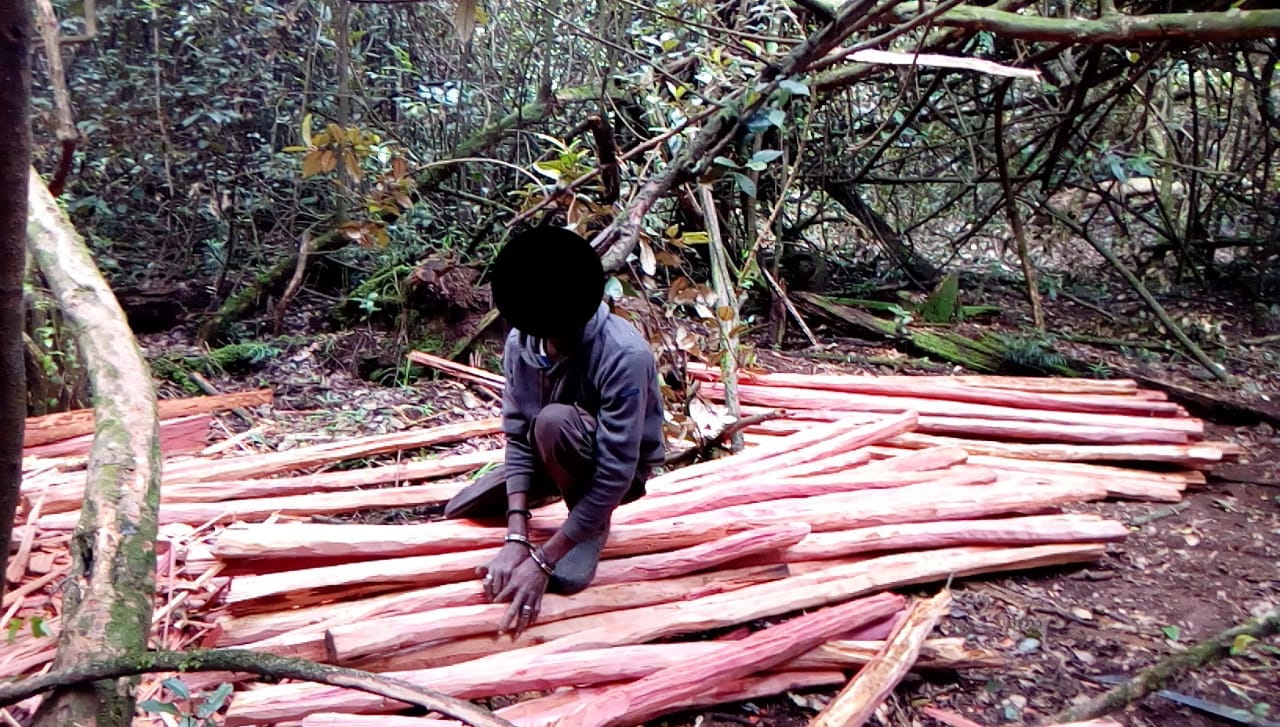 An illegal cedar logging arrest in July.
An illegal cedar logging arrest in July.
A new patrol vehicle funded by Elephant Crisis Fund (ECF), an initiative launched by Save the Elephants and the Wildlife Conservation Network, in partnership with the Leonardo DiCaprio Foundationis newly deployed in the field.
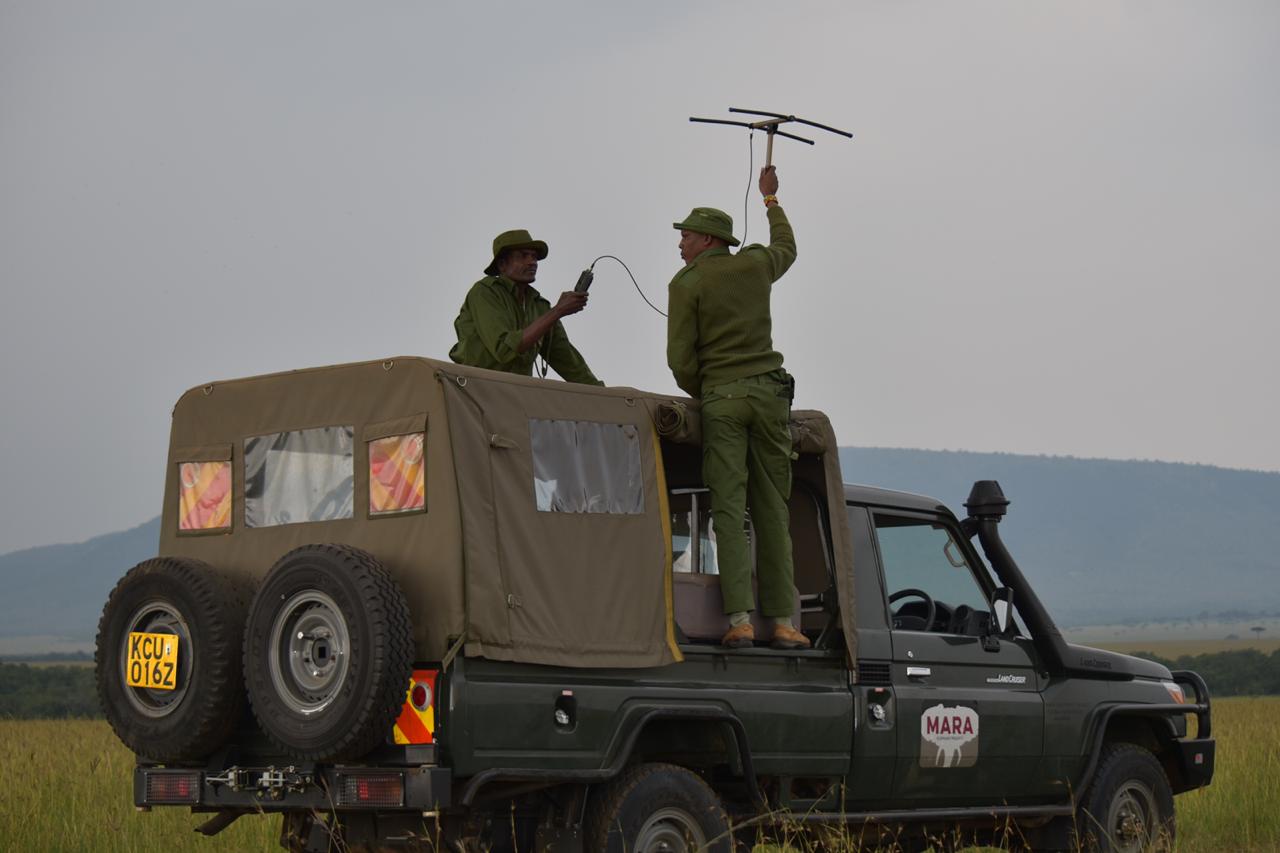 MEP rangers using the new ECF vehicle to locate Ivy via VHF.
MEP rangers using the new ECF vehicle to locate Ivy via VHF.
 After taking delivery of the Karen Blixen Camp Trust helicopter on the 24thof June, we have flown a total of 59 hours. To say we are relieved to have this vital asset back and operating in the Mara would be an understatement. The huge amount of flying time is reflected by the opportunities for collaring operations, elephant treatments and human-elephant conflict mitigation we were able to do in July. The new helicopter is owned by the Karen Blixen Camp Trust who believe in the work the helicopter can do for wildlife conservation. The registration of the helicopter is 5Y-MEP and it is painted British Racing Green which was the 2017 Robinson Helicopter Company color of that year. 5Y-MEP is running beautifully and seems to have a lot of power. During the last 59 hours almost all of this flying has been technical and demanding flying. On one occasion during the collaring in the Mau Forest there was really nowhere to land once the elephant fell asleep which meant that we “landed the tail” meaning that there was only space to land the tail rotor. During the Chemesusu collaring operation, the 5Y-MEP Karen Blixen Camp Trust helicopter was crucial to ensuring both elephant and personnel safety. This collaring operation attracted a lot of attention (pictured left) with several hundred people showing up to check out the helicopter. The rural community was very excited and polite, and we took a number of selfies and group photos with them.
After taking delivery of the Karen Blixen Camp Trust helicopter on the 24thof June, we have flown a total of 59 hours. To say we are relieved to have this vital asset back and operating in the Mara would be an understatement. The huge amount of flying time is reflected by the opportunities for collaring operations, elephant treatments and human-elephant conflict mitigation we were able to do in July. The new helicopter is owned by the Karen Blixen Camp Trust who believe in the work the helicopter can do for wildlife conservation. The registration of the helicopter is 5Y-MEP and it is painted British Racing Green which was the 2017 Robinson Helicopter Company color of that year. 5Y-MEP is running beautifully and seems to have a lot of power. During the last 59 hours almost all of this flying has been technical and demanding flying. On one occasion during the collaring in the Mau Forest there was really nowhere to land once the elephant fell asleep which meant that we “landed the tail” meaning that there was only space to land the tail rotor. During the Chemesusu collaring operation, the 5Y-MEP Karen Blixen Camp Trust helicopter was crucial to ensuring both elephant and personnel safety. This collaring operation attracted a lot of attention (pictured left) with several hundred people showing up to check out the helicopter. The rural community was very excited and polite, and we took a number of selfies and group photos with them.
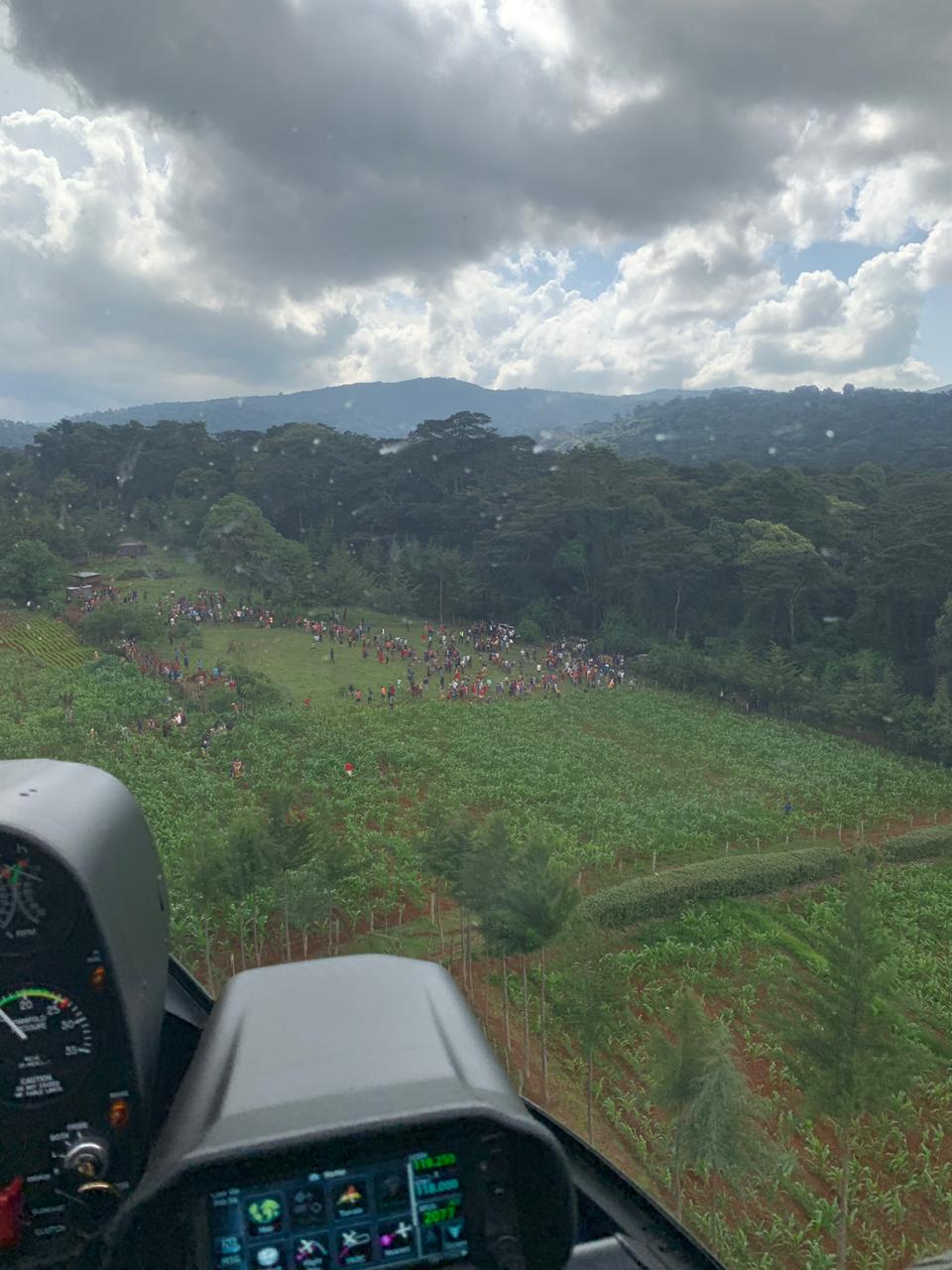
The community photographed from the KBCT helicopter during a collaring operation.
The month of July was busy for Mara Elephant Project’s communications and fundraising efforts. First, Max, a 10-year-old Kenyan, attending The Banda School in Nairobi raised over $8,300 for Mara Elephant Project rangers through an appeal he sent to his classmates and friends. Max is the son of Hilary Hurt, a former MEP Trustee, and Nicholas Sadron. Since Max is a resident of Kenya and his Mom and Dad are familiar with MEP, he came to the Mara to visit the project and spent some time with the rangers. Max got to see what they do first-hand in the field, and they thanked him for his fundraising efforts. Max also got the opportunity to go out with MEP CEO Marc Goss to the Mau Forest. Thank you to Max and everyone who supported his efforts!
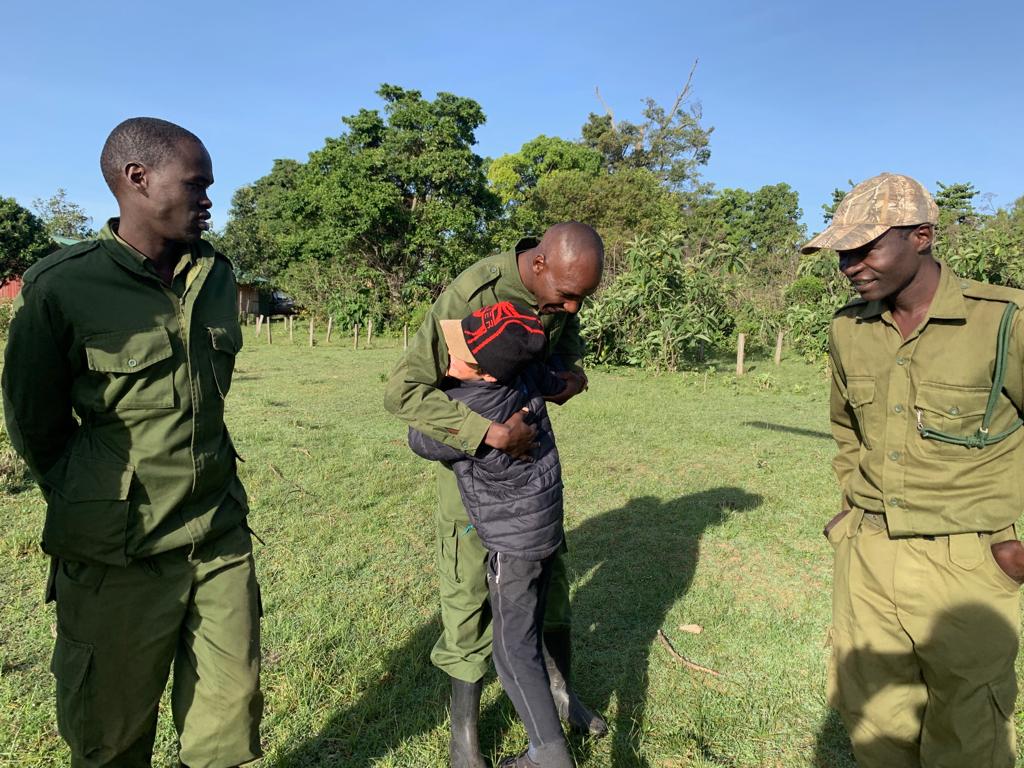
MEP rangers got to personally thank Max when he visited MEP HQ.
Additionally, MEP would like to thank the five supporters who donated a total of 135 kg of seed balls from Seedballs Kenya to be distributed in the Lemek, Ngosuani and Naroosura areas of the Mara. In the first half of 2019, MEP rangers distributed these seed balls on foot or using their patrol vehicle. Thank you to Free Spirit, Margaret Cashion, Nalle Hukkataival, Michael Prosper and László Szatmáry for committing to keep the Mara green. Intel supports African wildlife conservation through innovative AI technology. Their newest Expedition Collection celebrates that innovation with one-of-a-kind merchandise and all proceeds will be donated to African wildlife conservation, including the Mara Elephant Project! Originally previewed exclusively for Intel employees in May, the collection is now available online! Shop the Intel Store’s Expedition Collection today at http://bit.ly/2JFv0DC. Thank you, Intel, for supporting MEP! There was one Facebook fundraising from Mustafa in celebration of his birthday that exceeded his fundraising goal, thank you Mustafa!
Mara Elephant Project was featured on CGTN Africa on July 23 speaking about our human-elephant conflict mitigation strategies. Amy McConaghy visited MEP HQ and spent the day with Tracking Manager Wilson Sairowua and rangers. On July 16, Mara Elephant Project had the pleasure of attending the unveiling of two brand new toilet facilities at the Ngosuani Primary School during a ceremony that took place on school grounds. The toilet blocks, which MEP donated to the school, are built from re-purposed shipping containers and provide a safe and healthy environment for the boys and girls attending the school. MEP believes that by investing in the communities that coexist with wildlife in ways like this we are also fulfilling our mission of protecting the Mara’s elephants and habitat.
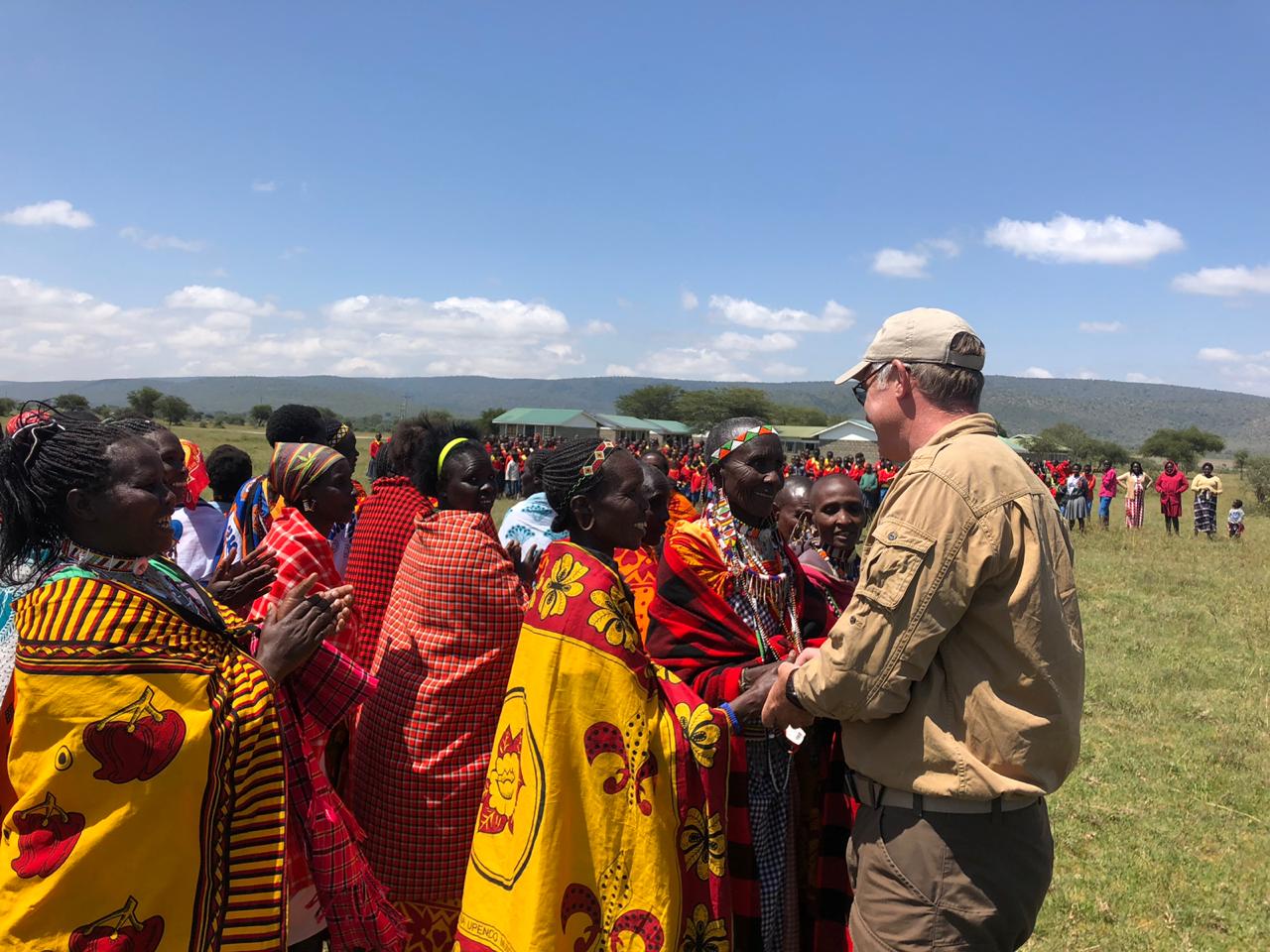
CEO Marc Goss greeting the community at the toilet unveiling ceremony.
Adam Bannister featured MEP in a piece on the Angama Mara blog that received a lot of attention on their social media feeds. We had many wonderful entries for July in the Greatest Maasai Mara photo competition. Thank you to Will Fortescue, Lusine Avakian, Rosa Maria Pastor, Rihaz Sidi, Julien Bundun, Thorsten Hanewald, Rebecca Johnson, Lennart Hessel, Bettina Pedersen, Stephen Underwood, Kathy Houleand Margaret Bishop for supporting MEP!
MEP celebrated World Ranger Day on July 31 with the release of the Sheldrick Wildlife Trust mid-term report and the world premiere of the updated MEP Results video that sits on our website. All of this culminated into a Facebook Fundraiser encouraging donors to support one-month of running costs for the MEP intelligence unit. The fundraiser will end August 5 but has already raised over $500. In total MEP raised $770 on Facebook and $4,000 through individual donors in July. MEP hosted a group of young teens from China at MEP HQ on July 22 thanks to Richard’s Camp and had groups in from Karen Blixen Camp and Elephant Pepper Camp in July.
The direct mail campaign that Mara Elephant Project began in March has come to a close and we’re happy to report we raised a total of $45,118 for core operations. Finally, we’re pleased to announce that on July 31, MEP Sergeant Dickson Njapit won a 2019 African Ranger Award given out annually by the Paradise International Foundation. Dickson started at MEP in 2011 and has risen to the rank of sergeant. He leads the Sheldrick Wildlife Trust Mau De-Snaring Unit in the Mau Forest and was responsible for training the new team in early 2018. Dickson has an exemplary track record, is a role model for all rangers and is an ambassador in the Maasai community. Congratulations Dickson! We also enjoyed a visit from MEP Board of Trustees Chairman Colin Church in July.
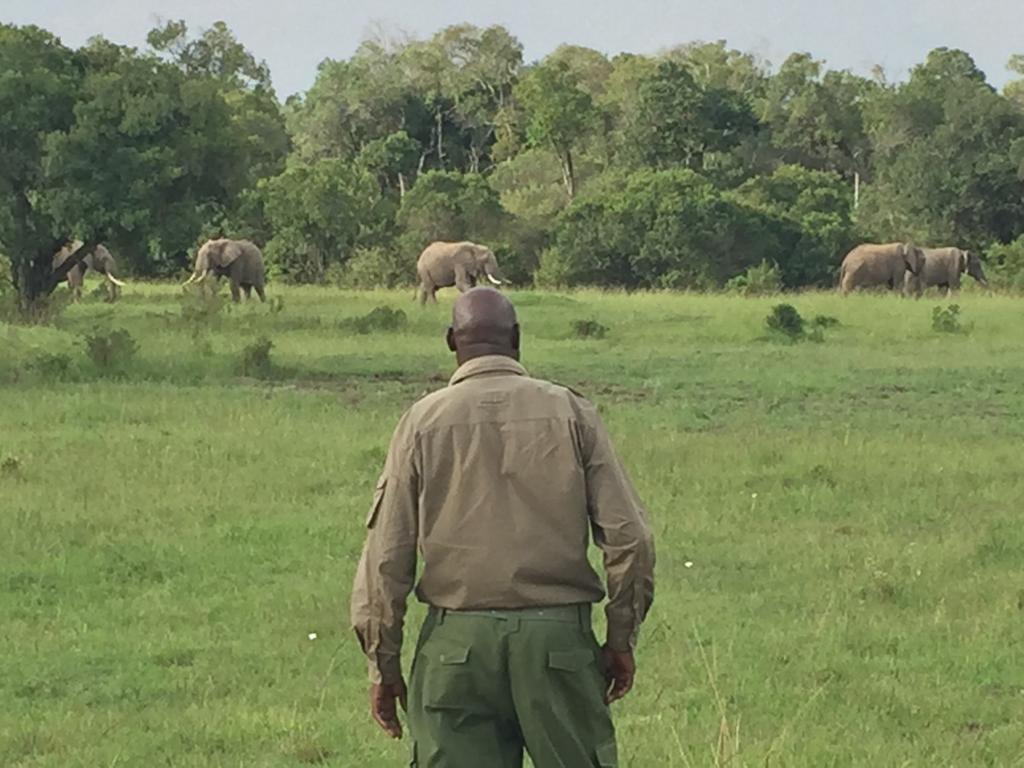 MEP Senior Warden James Ekiru with visiting elephants at MEP HQ.
MEP Senior Warden James Ekiru with visiting elephants at MEP HQ.
